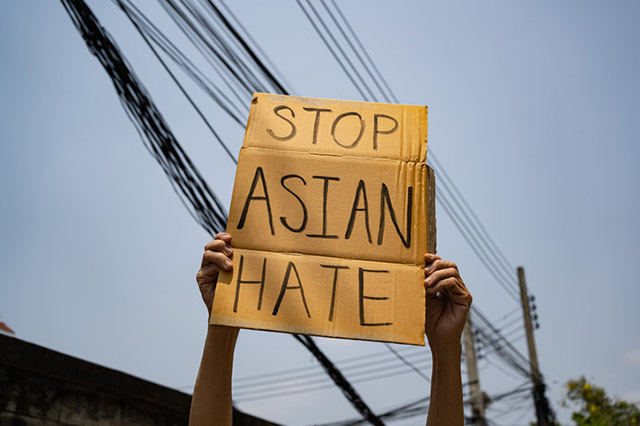His perspective, “Combating anti-Asian sentiment — a practical guide for clinicians,” was published March 24 in The New England Journal of Medicine.
“One of the consequences of suffering from this racism is fear, trauma and depression,” he said. “The way we are currently operating, we could let this fall through the cracks.”
He calls for hospitals and clinics to be more welcoming to Asian patients, and offers six tips:
- Alter the physical space. Include flags in clinical spaces from the Asian countries most heavily represented in the local community. Offer brochures in an Asian language most spoken in the community, and ensure that Asian people are depicted in brochures and posters in clinical spaces.
- Create a safe space for staff. Teach bystander intervention and crisis de-escalation. Consider further training for staff to gain expertise in discussing race with patients and colleagues. Offer institutional support such as counseling and time off for a staff member who experiences a hate crime.
- Address racism during intake. Specifically mention racism when acquiring patient history. Ask “Have you found yourself more anxious in light of the recent hate crimes against Asians? “Do you avoid certain locations due to fear of being discriminated against?” Screen patients for depression, anxiety, substance abuse, elder abuse, bullying, cyberbullying, and post-traumatic stress disorder.
- Make inpatient settings safer. Provide separate rooms for patients of color and patients who make discriminatory remarks.
- Look for injuries in a physical exam. Evaluate for tears in skin, abrasions, redness, swelling. Evaluate for abnormal gait, pain with movement or on palpation. Consider documenting lesions or conducting a “head-to-toe” physical exam, if appropriate.
- Offer resources. Offer Asian American resources such as Stop AAPI Hate , Asian Americans Advancing Justice; Asian Counseling and Referral Services to patients.
Over the past 12 months, 31% of Asian American people have reported being subjected to slurs or racist jokes, 26% have feared that someone might threaten or physically attack them, and 58% believe anti-Asian racism has increased since pandemic began, according to a survey by the Pew Research Center.
Lee, a Korean American, thinks that all Asian Americans are suffering from racism right now, though many may have not experienced an outright hate crime. While many people have donated time and money toward these causes, he also asks people to consider how they could support Asian Americans in their workplace and their home.
“These small changes will allow clinicians to capture diagnoses they might otherwise miss and to connect Asian-American patients with resources essential to their well-being, thereby providing holistic care that accounts for patients’ lived experience of race,” he wrote.


